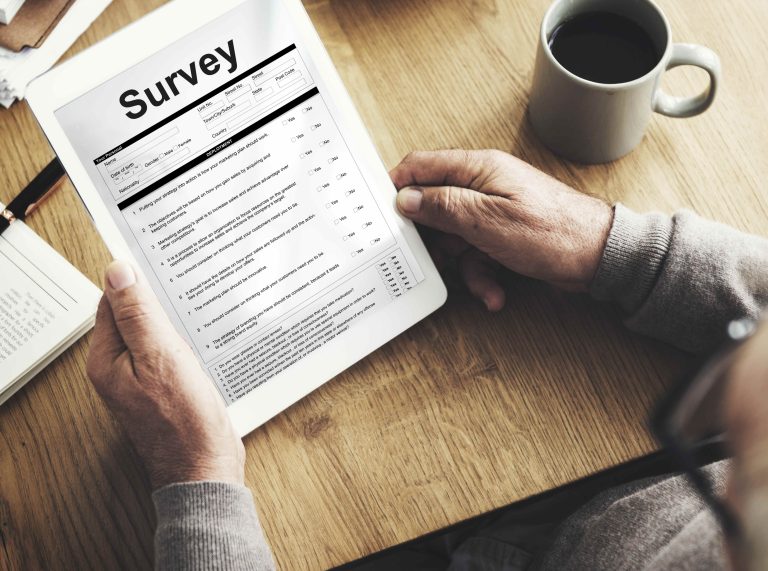Market research is the process of collecting and analysing information about a market, including its customers, competitors, and industry trends. By conducting market research, businesses can gain valuable insights that can inform their marketing strategies and help them make informed decisions. In this blog post, we’ll discuss the principal steps you need to take to conduct market research.
Step 1: Define Your Research Objectives
The first step of the market research process is the most important part. Before you begin conducting market research, you need to define your research objectives. In other words, what is the question that you want to answer? What information do you need to make informed decisions about this question? When you understand the question that you need to answer, this will allow you to identify the specific questions you will need to ask in the survey and who you need to interview to collect this information.
By defining your research objectives, you can ensure that you collect the right data and focus your research efforts.
Step 2: Determine Your Research Methodology
Once you’ve defined your research objectives, you need to determine your research methodology, that is how are you going to collect the information you need? There are many different methods of collecting market research data. This includes face to face surveys, individual depth interviews, focus groups, and online research.

The type of research methodology that you choose will depend upon a range of different factors such as the availability of the people that you want to interview, the size of your budget, the depth of information that you need, how robust the results need to be, i.e. do they need to be statistically significant and will the data be subject to modelling or statistical analysis.
Often, in smaller businesses, there may not be a budget for market research, so a simple solution might be a DIY survey using Survey Monkey or another freely available software or to phone your customers and prospective customers.
Choose a method that is appropriate for your research objectives, budget, and timeframe.
Join the NoLimits Business Community
Are you a business owner looking to take your business to the next level? Join our innovative community of like-minded professionals and gain access to a wealth of valuable resources, including a community portal to chat with other business owners, ebooks, business development software, and growth events that will transform the way you do business. Best of all, these resources are completely free and will be available to you forever.
But the benefits of joining our NoLimits business community don’t stop there. By becoming part of our community, you’ll have the opportunity to connect with other business owners, share insights and ideas, and build valuable relationships that will help your business thrive. Don’t miss out on this amazing opportunity to supercharge your business and join us today!
Step 3: Develop Your Research Instrument

Next, you need to develop your research instrument. This might be a survey questionnaire, interview guide, or focus group script. Your research instrument should be designed to collect the information you need to answer your research questions. It should be clear, concise, and easy to understand.
You will need to consider whether you need quantitative or qualitative data. Quantitative data consists of numbers and hard data, usually collected using large scale surveys. This kind of data helps market teams answer questions about how much, how often, or how many.
Qualitative data is non-numerical, descriptive, and observational. You can find qualitative data through focus groups or depth interviews. It can help you learn more about people’s feelings or attitudes towards things.
The length and complexity of your questionnaire or script will be determined by the type of data collection method you have chosen.
If you are using a survey, keep it as short as possible, 5 minutes should be your aim and certainly no more than 10. If your survey takes more than a few minutes to complete people will be less likely to answer all the questions and may just drop out. Ask simple, unambiguous questions and avoid having too many open-ended questions. Many people prefer to answer multiple-choice questions instead, since they require less effort.
When creating surveys, use a logical format so survey takers understand what you are asking. Group questions that are similar together, and use things such as page titles and instructions to guide people through your survey.
Qualitative research, which includes group or individual interviews requires a prepared script listing all the areas that you want to cover but try to use an experienced interviewer as they will often need to allow the discussion to wander (in a controlled way) to get to the real nuggets of opinion, rather than sticking rigidly to the prepared script.
Step 4: Collect Your Data
Once you’ve developed your research instrument, you can begin collecting your data. This might involve sending out surveys, conducting interviews, or hosting focus groups.
When planning the data collection you need to consider whether the information could be affected by outside factors. The timing of the research needs to be considered, events outside your control such as strikes, major sporting events, holidays and even the weather can all influence the availability of your respondents and sometimes the responses they give.

Step 5: Analyse Your Data
After you’ve collected your data, you need to analyse it. This might involve coding survey responses, transcribing interviews, or reviewing focus group transcripts. Look for patterns and trends in your data that can help you answer your research questions and inform your marketing strategy. If you have quantitative data, design an analytic plan; go through your questionnaire and decide how to analyse each of the questions; by demographics, attitude or behaviour, depending on the questions you have asked.
Step 6: Draw Conclusions and Make Recommendations
Finally, you need to draw conclusions and make recommendations based on your research findings. What did you learn about your target market? How do your competitors compare? What industry trends are likely to impact your business? Use your research findings to inform your marketing strategy and make informed decisions about your business.
The implementation of the recommendations that the research has identified is possibly the most important step in the research process.
In conclusion, conducting market research is an essential part of any successful marketing strategy. By defining your research objectives, determining your research methodology, developing your research instrument, collecting your data, analyzing your data, and drawing conclusions and making recommendations, you can gain valuable insights into your target market and make informed decisions about your business. With the right market research, you can stay ahead of your competitors and achieve your business goals.
By Justin Charlton-Jones
Join the NoLimits Business Community
Are you a business owner looking to take your business to the next level? Join our innovative community of like-minded professionals and gain access to a wealth of valuable resources, including a community portal to chat with other business owners, ebooks, business development software, and growth events that will transform the way you do business. Best of all, these resources are completely free and will be available to you forever.
But the benefits of joining our NoLimits business community don’t stop there. By becoming part of our community, you’ll have the opportunity to connect with other business owners, share insights and ideas, and build valuable relationships that will help your business thrive. Don’t miss out on this amazing opportunity to supercharge your business and join us today!

